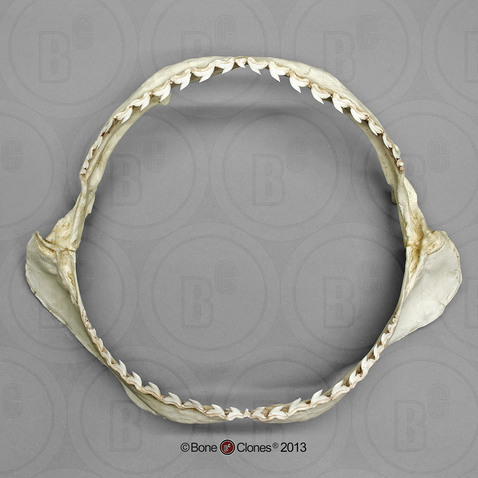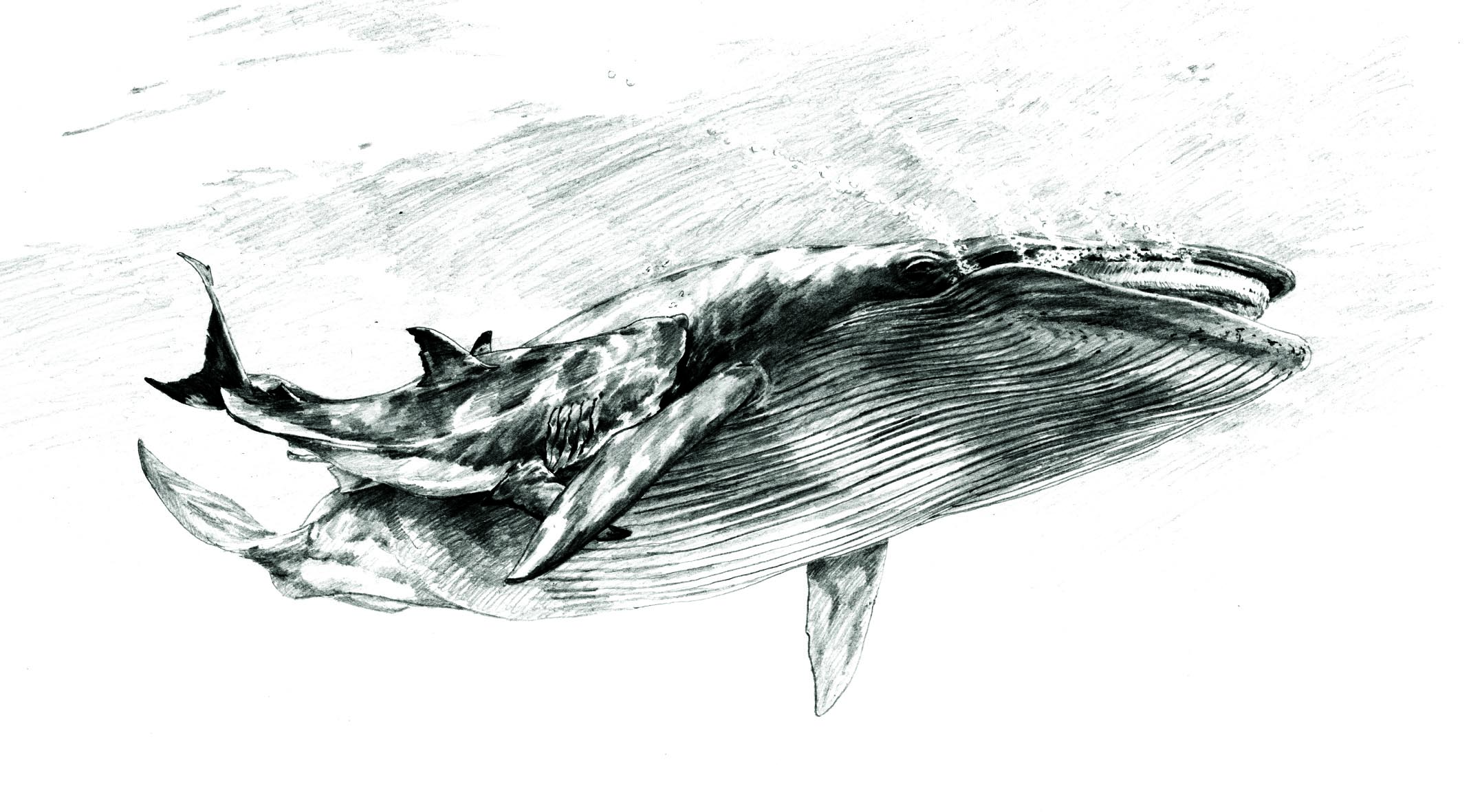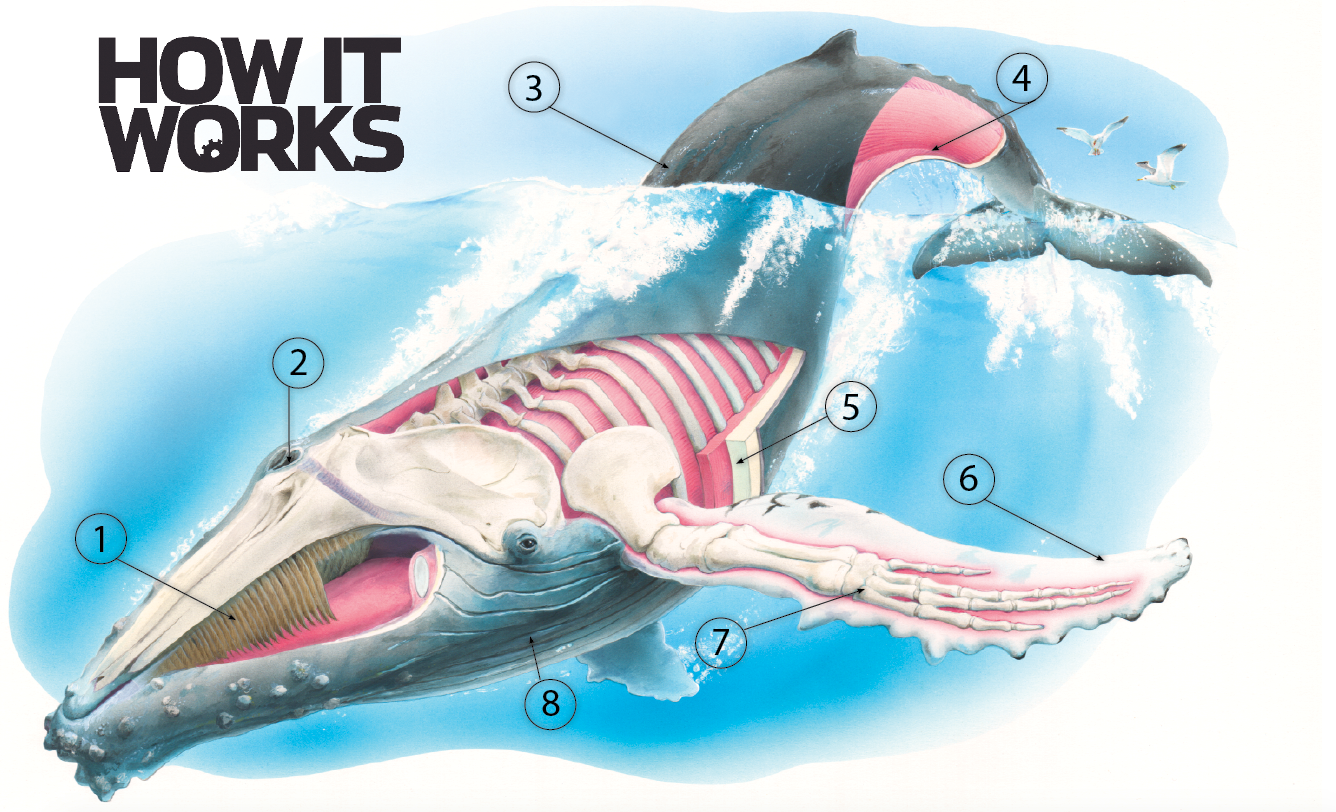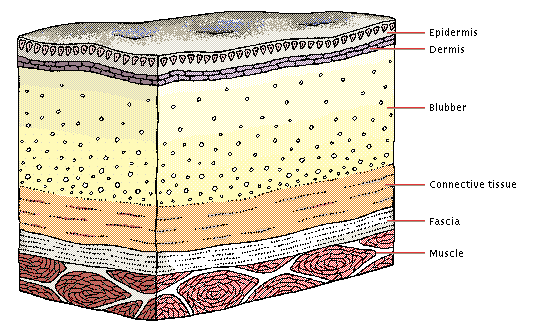|
|
Post by sam1 on Oct 27, 2019 23:05:17 GMT 5
Alright, I give you about the visual side..the jaw just seems deceivingly large so I was deceived. Congrats, this may be your first argument won against me. As for the second point, surviving for weeks obviously isn't evidence of health. For a 5-6m shark to bite that deep would need taking at least some time..it just would, you can't deny that. So the whale must've been unable to react properly(a simple 1-second roll that would shake off a shark). So if you want to be realistic, assume the whale in question was severely injured prior to attack, and unable to move properly. This is not about winning arguments, this is about developing an accurate understanding of the subject matter, but thanks for the complement. The killing apparatus (jaw structure + dentition) will make significant difference. Tiger shark's killing apparatus for reference:  With that, it took a Tiger shark about two weeks to kill a (sick/injured) blue whale? Here is the video: www.youtube.com/watch?v=Ds_p3eWU6NA1) This case of trophic interaction is not independently verified. 2) The blue whale could barely move. 3) Look at the caudal section of the whale which the Tiger shark was trying to cut through; way too small for a supposedly 60 foot long Blue whale. This was a blue whale neonate at most. Megalodon's killing apparatus for reference:  "Massive saw blade teeth and roots for damaging pachyostotic thickened mammal bones." "Massive saw blade teeth and roots for damaging pachyostotic thickened mammal bones." - Diedrich (2013) 1) Remains of a gigantic baleen whale which suffered a predatory attack from a juvenile Megalodon (5-6 m TL range), suggest that this was a "one-time event." The whale most likely escaped. 2) The juvenile Megalodon aimed for the chest cavity of the baleen whale and attempted to deliver a disabling bite there (one of the Megalodon's inferred attacking strategies). The shark most likely left a gaping wound which became infected and the victim died about six weeks later. Nothing more is clear to anybody, and neither there is a need to "invent details." A lone modern shark does not take its chances with a gigantic baleen whale just like that. theropod FYI EDIT Sharks have taken a nosedive in the matters of 'big-game hunting' since the Pliocene - why this is the case, is not clearly understood but a matter worth investigating. However, sharks have been around for over 400 million years, and they deserve our respect and love. Sharks have significant role in shaping and maintaining marine ecosystems and have been through exceedingly difficult times throughout prehistory, and I believe that these creatures have the potential to outlast humans on Earth. Nevertheless, WE can all learn to admire the sheer complexity of 'animals' that once existed, having accomplishments that continue to baffle us as they are unmasked. Modern animals are also fascinating and have surprised us all from time-to-time. So..you want us to believe that a juvenile megalodon is by MANY ORDERS OF MAGNITUDE more capable biter than a tiger shark? Let me try to simplify and clarify this as much as possible again .. how long you think that initial bite from that juvenile meg lasted? Around a second, less or more? |
|
|
|
Post by theropod on Oct 27, 2019 23:08:34 GMT 5
Kallal et al. estimated 4-7 m, but based on Lowry et al.’s regression for mean interdental distance of anterior and anterolateral teeth, it is probably closer to the top of that range, ~7.4 m. 10^((log10(60)+2.111)*1/1.005) [1] 7409.728 sam1 order of magnitude = ×10 What you mean is "many times". Still a ridiculous proposition though. |
|
|
|
Post by Life on Oct 28, 2019 0:29:42 GMT 5
Ok, not you’ve gone down to "almost", but how are three impact points on a rib, which clearly weren’t particularly large, ergo couldn’t have been overly deep, "almost breaching the chest cavity"? You are pointing out perceived hyperbole about the whale, yet you keep posting this kind of hyperbole about the shark. 1. It takes a predator of considerable size to successfully breach even the outer layers of an (alive and healthy) gigantic whale. 2. Given the sheer disparity in the size of the predator and prey involved, breaching the whale's skin all the way down to the bone, is very impressive for a shark (5-6 m TL range). An eye-opener - not some hyperbole.    The blubber part alone can be up to 15 cm thick in gigantic whales. Even the epidermis layer can be difficult to breach if the whale is on the move. All those layers would have mitigated the force of the impact on the bones, and the shark was not in the position to bite down deeper due to being very small. It would already have too much on its plate to process and digest. The shark might have breached the chest cavity in another attack but the whale was able to escape in time. Nevertheless, wounds inflicted on this whale were sufficient to cut its life short. Are you implying bigger, more powerful jaws at size parity? That would be consistent with the trend of positive allometry in jaw size in great white sharks. However, note that following that trend of increasing jaw size, the average adult megalodon, based on the tooth sizes relative to the Yorktown dentition, is under 13 m long, and the Yorktown dentition would belong to a 14.9 m animal. Certainly that shark would have a more formidable bite than a white shark at size parity, as it is a shark with jaws the size of a hypothetical isometrically scaled 17 m shark, but I think we are all already considering such jaw sizes anyway, at least I am. JW - TL ratio of Megalodon is not well-established. The exact count of teeth in each row of Megalodon is known from independent observations, and the spacing between them is apparent in the context of this shark for now. Spacing factor indicate that this was a small Megalodon - very small to be precise. So..you want us to believe that a juvenile megalodon is by MANY ORDERS OF MAGNITUDE more capable biter than a tiger shark? Let me try to simplify and clarify this as much as possible again .. how long you think that initial bite from that juvenile meg lasted? Around a second, less or more? 1. Megalodon is far better equipped to destroy biotic structures than a Tiger shark of comparable size, better than the great white shark as well. 2. I do not know! All I know is that this was a one-time event (single attack). Silly questions. Kallal et al. estimated 4-7 m, but based on Lowry et al.’s regression for mean interdental distance of anterior and anterolateral teeth, it is probably closer to the top of that range, ~7.2 m. @sam order of magnitude = ×10 What you mean is "many times". Still a ridiculous proposition though. Jaw dimensions are more important than the raw TL factor. This shark wasn't exactly big in the 'jaw dimensions' aspect. |
|
|
|
Post by theropod on Oct 28, 2019 1:44:53 GMT 5
Lowry et al.’s regression for TL from the average interdental distance for the anterior 5 interdental gaps in the upper jaw of C. carcharias:
10^((log10(60)+2.111)*1/1.005)
[1] 7409.728
So likely a 7.4 m shark.
I am merely trying to present a more rigorous size estimate for the shark that left that bite mark, using a formula specifically made for such purposes.
We can then reverse-calculate the length of the tooth row. As you say, it is the size of the jaws that left the bite that is most relevant:
10^predict(lm(data=lowry, log10(bc)~log10(tl)), data.frame(tl=7409.728), interval="predict", level=0.5)
fit lwr upr
1 1246.996 1178.103 1319.918
So a tooth row likely around 1.25 m long.
And jaw perimeter
10^predict(lm(data=mollet, log10(ujp)~log10(tl)), data.frame(tl=7409.728), interval="predict", level=0.5)
fit lwr upr
1 1494.402 1374.823 1624.383
So a dUJP around 1.49 m.
That is not a large megalodon, although to be fair, it is a very large shark by modern standards. So yes, this is impressive, but not an entirely ridiculous feat.
Yes, I know that very well.
That was not what I was getting at. If you think Megalodon’s jaws were vastly more potent than a great white’s at equal body size, you must be assuming that the former had proportionately larger jaws, right? I was pointing out the implications that has for its body size.
Because at the same summed tooth width, or same jaw perimeter, any difference in the ability to cause damage between these two would at best be minor, as that would be two jaw apparate of very similar size and power.
|
|
|
|
Post by Life on Oct 28, 2019 2:39:25 GMT 5
Lowry et al.’s regression for TL from the average interdental distance for the anterior 5 interdental gaps in the upper jaw of C. carcharias: 10^((log10(60)+2.111)*1/1.005)
[1] 7409.728So likely a 7.4 m shark. I am merely trying to present a more rigorous size estimate for the shark that left that bite mark, using a formula specifically made for such purposes. We can then reverse-calculate the length of the tooth row. As you say, it is the size of the jaws that left the bite that is most relevant: 10^predict(lm(data=lowry, log10(bc)~log10(tl)), data.frame(tl=7409.728), interval="predict", level=0.5)
fit lwr upr
1 1246.996 1178.103 1319.918
So a tooth row likely around 1.25 m long. And jaw perimeter
10^predict(lm(data=mollet, log10(ujp)~log10(tl)), data.frame(tl=7409.728), interval="predict", level=0.5)
fit lwr upr
1 1494.402 1374.823 1624.383So a dUJP around 1.49 m. That is not a large megalodon, although to be fair, it is a very large shark by modern standards. So yes, this is impressive, but not an entirely ridiculous feat. Yes, I know that very well. That was not what I was getting at. If you think Megalodon’s jaws were vastly more potent than a great white’s at equal body size, you must be assuming that the former had proportionately larger jaws, right? I was pointing out the implications that has for its body size. Because at the same summed tooth width, or same jaw perimeter, any difference in the ability to cause damage between these two would at best be minor, as that would be two jaw apparate of very similar size and power. DUJP of 1.49 m? That is like 4.9 feet across which is absolutely unrealistic for the shark [in question] in view of the visible spacing between its anterior teeth, curvature pattern and the fact that the posterior side really condenses. |
|
|
|
Post by theropod on Oct 28, 2019 2:44:24 GMT 5
What do you mean "the posterior side really condenses"?
|
|
|
|
Post by theropod on Oct 28, 2019 2:56:43 GMT 5
These figures are what the data suggest. We can and should check their plausibility, but then we should do so on the grounds of proper evidence.
If you have quantitative data to prove it is unrealistic, be my guest.
I for my part find these estimates quite plausible looking at independent verification: The first 6 teeth teeth in the "juvenile" meg tooth set listed on bone clones¹ are ~78-90 mm wide, so it’s plausible for their tooth tips to be roughly that widely spaced (the same assumption Kallal et al. made, only they used it to estimate the tooth height and then used Gottfried et al.’s formula to estimate TL, which I thought we all agreed produced underestimates…).
And that dentition is probably from a shark over 10 m long, so it is entirely realistic that 6 cm of tooth spacing would correspond to a 7.4 m shark.
We can also look at Lowry et al.’s data and see that the 5.6 m white shark in the sample has an average interdental spacing of about 5 cm for the first 5 spaces. Once again, quite plausible that a shark with 6 m spacings could be as big as estimated by the regression.
And since even some actual white sharks can have jaw perimeters of 1.2-1.4 m (a 6.1 m shark in Mollet et al.’s dataset has a 1430 cm dUJP), 1.5 m for a 7.4 m meg is entirely plausible as well.
That being said, of course these calculations have large error bars, as indicated by the PIs in my original post. But whatever the exact size, whether that's a shark with a 1.3 or 1.6 m jaw perimeter, it definitely is a very large shark.
¹https://boneclones.com/media/PDF/shark-teeth-sizes.pdf
|
|
|
|
Post by Life on Oct 28, 2019 3:04:04 GMT 5
This:  More or less. |
|
|
|
Post by theropod on Oct 28, 2019 3:10:53 GMT 5
Not sure how exactly you scaled that, but the jaw perimeter may be more or less what I just estimated. The one measurable in the image is about 1.35 m, but that’s not taking into account that the jaws aren’t perfectly flat and vertical, the real measurement could easily be 14 cm longer than that, all it would take would be for the jaw to be angled from the vertical by about 25°, which sounds very realistic). So still a monster of a shark by modern standards. Would probably have massed about 4 tons. Of course modern sharks aren’t necessarily capable of doing whatever a 7m+, 4t+ shark with a 1.5 m jaw can do. EDIT: OK I’ve refined this further using Lowry et al.’s dataset. Using the average interdental distance data for the upper jaw, we can in fact predict tooth row length directly, as there are 12 shark specimens for which both measurements are known: 10^predict(lm(data=lowry2, log10(bc)~log10(idd)), data.frame(idd=60), interval="predict", level=0.5) fit lwr upr
1 1224.436 1179.88 1270.675
Kent suggested that the UJP should be about 17% greater than the length of the tooth row, which would make this one’s perimeter about 1.43 m. And based on all 18 specimens for which IDD is known, the TL becomes: 10^predict(lm(data=lowry2, log10(tl)~log10(idd)), data.frame(idd=60), interval="predict", level=0.5)
fit lwr upr
1 7084.182 6679.055 7513.883So most likely range ~6.7-7.5 m, with point estimate 7.1 m. The 95% PI would be 5.9-8.5 m. So clearly, in almost all conceivable cases, this is a very big shark by modern standards, with the 4 m estimate not really making sense, but the 7 m estimate likely close to the real size of the shark. So again, this is not to detract from how impressive this is, but it’s not really surprising modern sharks don’t do this, as there aren’t that many 7 m great white sharks around nowadays. Using Mollet’s data for an independent prediction of dUJP at that length: > 10^predict(lm(data=mollet, log10(ujp)~log10(tl)), data.frame(tl=7084.182), interval="predict", level=0.5) fit lwr upr
1 1428.758 1314.995 1552.362Grey: On a different note, this seems to point towards the 17% being more likely to be correct (on average). Checking this further, predicted DUJP’s for white sharks, over their entire size range, is about 21-20% greater than predicted bite circumference. |
|
|
|
Post by Grey on Oct 28, 2019 17:09:01 GMT 5
Yes interesting but anyway I still ignore any assumption of tooth free space percentage in the absence of any hard data about GWS and/or meg tooth spacing.
I agree though the actual shark was rather larger than a typical Carcharodon and most likely a member of the Otodus/Carcharocles lineage.
I agree however with Life that this example is indicative of the lethal potency of the bite in this genus; a small member of the genus was clearly capable of inflicting a severe injury to a good-sized mysticete.
|
|
|
|
Post by sam1 on Oct 29, 2019 15:39:20 GMT 5
So..you want us to believe that a juvenile megalodon is by MANY ORDERS OF MAGNITUDE more capable biter than a tiger shark? Let me try to simplify and clarify this as much as possible again .. how long you think that initial bite from that juvenile meg lasted? Around a second, less or more? 1. Megalodon is far better equipped to destroy biotic structures than a Tiger shark of comparable size, better than the great white shark as well. 2. I do not know! All I know is that this was a one-time event (single attack). Silly questions. The questions are for a purpose. I asked you what you think, your guess..can you give a guess how long it would take for it to do such a bite. Here's why I asked. It takes about 2 seconds for this blue whale to accelerate and roll sideways ar the same time, reacting to a touch of an orca. |
|
|
|
Post by Grey on Nov 2, 2019 2:00:32 GMT 5
|
|
|
|
Post by sam1 on Nov 3, 2019 23:48:48 GMT 5
Can you give the basic measurements - total width or total height - instead? Maybe it's just me but the "most posterior upper teeth" and upper jaw perimeter figures aren't of much use from that image. |
|
|
|
Post by Grey on Nov 4, 2019 16:44:47 GMT 5
That is the only measurements I have from Stephen Godfrey.
|
|
|
|
Post by sam1 on Nov 7, 2019 20:42:23 GMT 5
Here is the ~90° angle. Tricky to place the lower jaw and not to make it look dislocated. But overall I wouldn't dismiss this being a possibility also.  |
|











